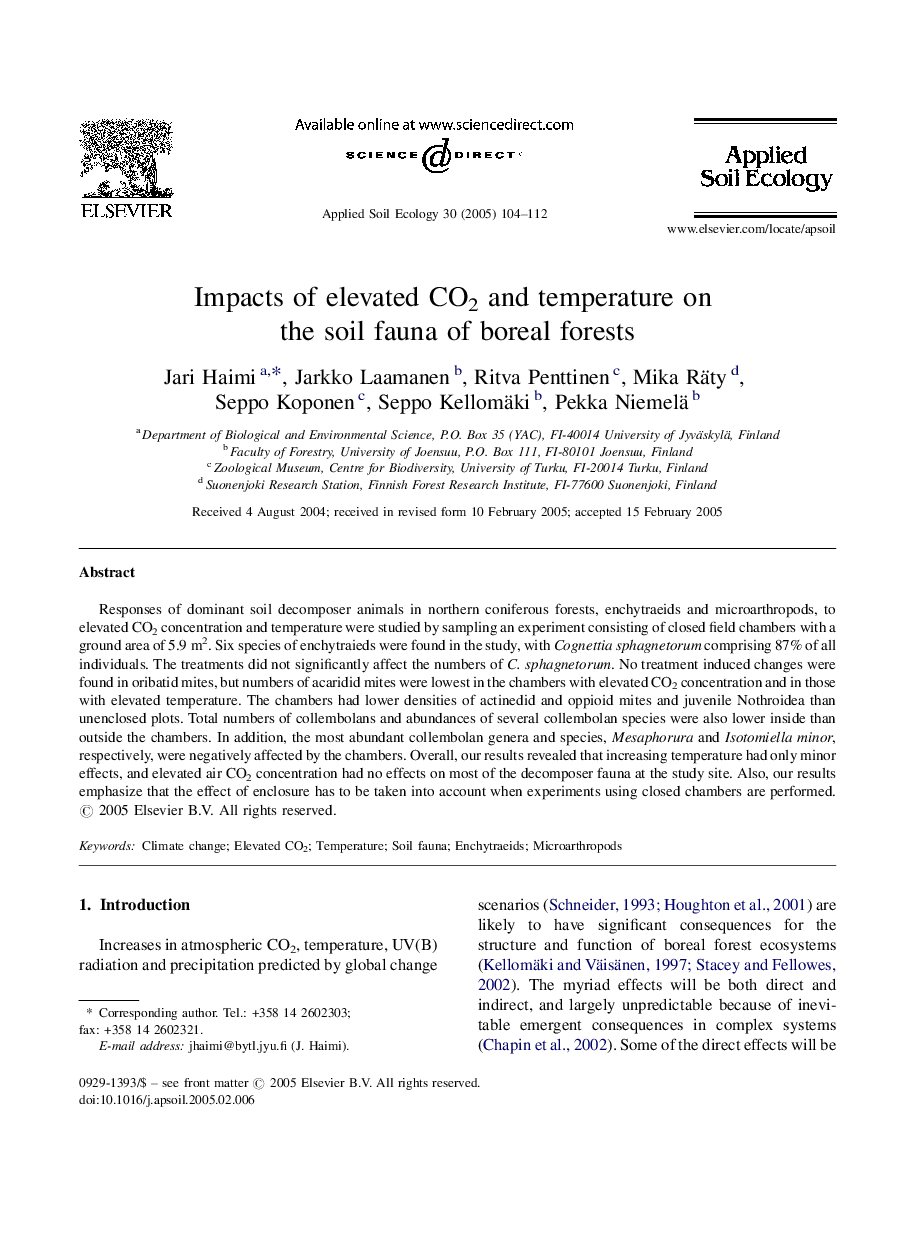| Article ID | Journal | Published Year | Pages | File Type |
|---|---|---|---|---|
| 9445197 | Applied Soil Ecology | 2005 | 9 Pages |
Abstract
Responses of dominant soil decomposer animals in northern coniferous forests, enchytraeids and microarthropods, to elevated CO2 concentration and temperature were studied by sampling an experiment consisting of closed field chambers with a ground area of 5.9Â m2. Six species of enchytraieds were found in the study, with Cognettia sphagnetorum comprising 87% of all individuals. The treatments did not significantly affect the numbers of C. sphagnetorum. No treatment induced changes were found in oribatid mites, but numbers of acaridid mites were lowest in the chambers with elevated CO2 concentration and in those with elevated temperature. The chambers had lower densities of actinedid and oppioid mites and juvenile Nothroidea than unenclosed plots. Total numbers of collembolans and abundances of several collembolan species were also lower inside than outside the chambers. In addition, the most abundant collembolan genera and species, Mesaphorura and Isotomiella minor, respectively, were negatively affected by the chambers. Overall, our results revealed that increasing temperature had only minor effects, and elevated air CO2 concentration had no effects on most of the decomposer fauna at the study site. Also, our results emphasize that the effect of enclosure has to be taken into account when experiments using closed chambers are performed.
Related Topics
Life Sciences
Agricultural and Biological Sciences
Ecology, Evolution, Behavior and Systematics
Authors
Jari Haimi, Jarkko Laamanen, Ritva Penttinen, Mika Räty, Seppo Koponen, Seppo Kellomäki, Pekka Niemelä,
